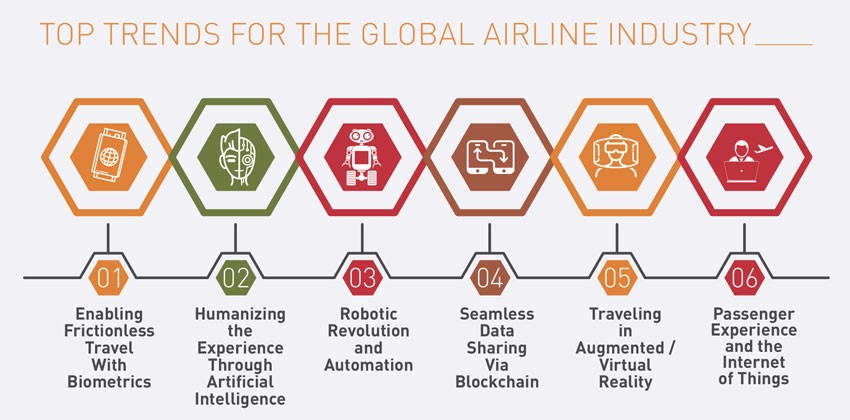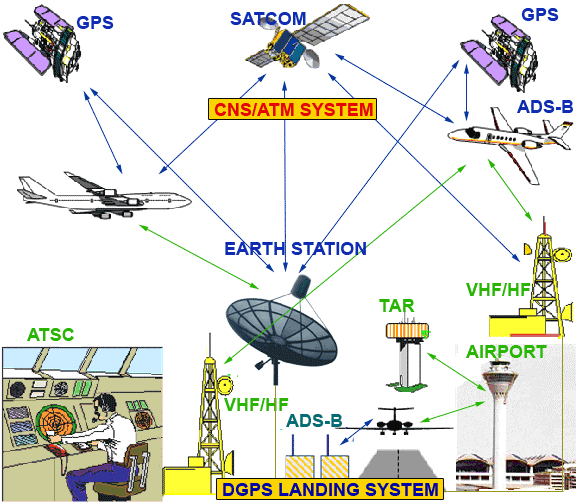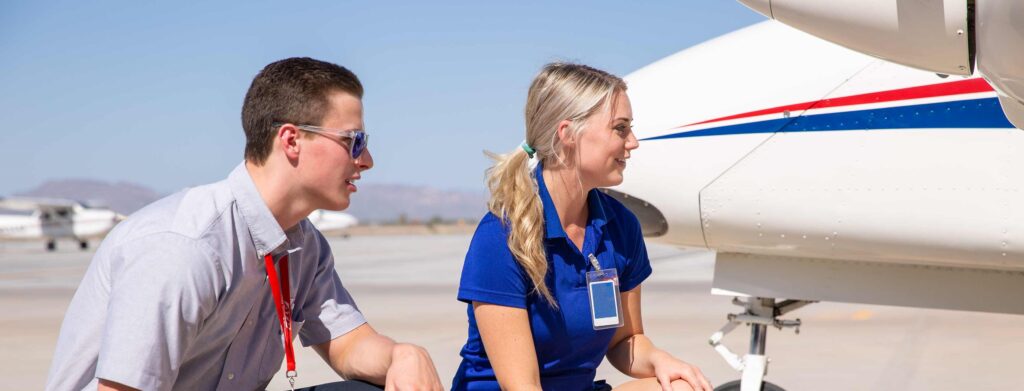
Are you looking to pursue an aviation career? Look no further than Global Skills Academy in Delhi, India. Our comprehensive aviation training course is designed to equip you with the skills and knowledge needed to excel in the dynamic field of aviation.
Embark on a rewarding journey towards a successful career in aviation with the industry-leading training course at Global Skills Academy, located in the heart of Delhi, India. Our program is meticulously crafted to provide you with the expertise and confidence required to thrive in the aviation industry.
Elevate your career prospects in the aviation sector with the specialized training course offered at Global Skills Academy in Delhi, India. Our cutting-edge curriculum and experienced instructors ensure that you receive top-notch training, setting you on the path to a flourishing career in aviation.
Take the first step towards a fulfilling career in aviation by enrolling in the esteemed training course at Global Skills Academy, Delhi, India. Our program is tailored to provide you with the essential skills and insights needed to stand out in the competitive aviation industry.
TRAINING COURSE
AIRLINE MANAGEMENT

COURSE DURATION : 6 MONTHS
MODULES
BUSINESS & CORPORATE AVIATION MANAGEMENT
AIRLINE OPERATIONS AND MANAGEMENT
AIRLINE NETWORK PLANNING, OPERATIONS & SCHEDULING
AIRLINE MARKETING & MANAGEMENT
INTEGRATED AIRLINE OPERATIONS
AIR TRANSPORT ECONOMICS & FINANCE
COMMERCIAL AVIATION RISK & SAFETY MANAGEMENT
AVIATION LOGISTICS
INTEGRATED AVIATION VALUE CHAIN
THE ECONOMICS OF AIR CARGO
TRAVEL, TOURISM & THE AIRLINE PRODUCT
AIRPORT MANAGEMENT TRAINING COURSE
DURATION : 6 MONTHS

Airport operations
The main airport operations can be divided into four types: landside operations, airside operations, billing and invoicing, and information management.
Landside operations are aimed at serving passengers and maintenance of terminal buildings, parking facilities, and vehicular traffic circular drives. Passenger operations include baggage handling and tagging. Terminal operations comprise resource allocation and staff management.
Airside operations include aircraft landing and navigation, airport traffic management, runway management, and ground handling safety.
Billing and invoicing operations cover aeronautical and non-aeronautical revenue. Ledger or accounting systems contain information regarding airport finances: flight bills, handling invoices, cash, sales within the airport (points-of-sales), staff payrolls, etc.
Information management relates to the collection and distribution of daily flight information, storing of seasonal and arrival / departure information, as well as the connection with airlines.
Airport management systems serve to optimize all these operations: passenger processing, baggage tagging and handling, arrival / departure operations, departure control systems, information distribution, and air traffic control (ATC). Airport Management can also include other solutions, like CRMs and environmental management systems.
AIRPORT MANAGEMENT TRAINING COURSE
COURSE MODULES
AIRPORT PLANNING AND MANAGEMENT
MANAGING AIRPORTS & AIRPORT OPERATIONS
THE MODERN AIRPORT TERMINAL
AVIATION AND AIRPORT SECURITY
AIRPORT MASTER PLAN – CASE STUDY
AIRPORT PERFORMANCE MEASURES
AIRPORT MARKETING
ASSESSMENT OF AIRPORT SERVICE PERFORMANCE
AIRPORT EMERGENCY PLAN

Aviation Industry Digital Transformation

There are already a vast number of benefits which can be seen in what technology is able to provide for Airline operations, cybersecurity and the customer experience, and this will constantly develop and strengthen as time goes on. 2019 looks to be the era of digital transformation with technology becoming a part of everyday life within all industries, particularly so in the air transport industry. So airlines must start to embrace technology advances to not only develop their current services and products, but to gain competitive advantage before they are left behind.

DIGITAL TRANSFORMATION IN AIRLINE INDUSTRY
Faced with rising operating costs, evolving customer needs and global challenges, the Airline industry offers a great learning place for other industries. On and off the runway, customers are pushing airlines to think more like retailers and less like a mode of transportation. Expectations around seating packages, interactions with staff and priority treatment are some of the experiences that matter to customers.
"Digital...is the foundation of AirAsia. We're the first airline in Asia to go on the Internet." - Tony Fernandes, GCEO of AirAsia
UPCOMING TRENDS & TECHNOLOGIES IN AVIATION
Increasing adoption of Digitalization in aviation Industry is all set to drive efficiency, reduce costs and enhance passenger experience. Advancements in communication technologies, integration of AI, IOT and Machine Learning with conventional technologies have played a major role in the growth of this market by providing high-speed connectivity for passengers, flight crew, air traffic controllers, and ground station teams. There are multiple use cases of Digital Aviation such as connected aircrafts, Digital MRO, 5G, AR and VR, In-Flight Entertainment among others.
For aviation companies like airlines and airports, the goal is to create a transformation program that is tightly connected with operations. The Internet of Things is a revolutionary concept that has the potential to change operations on the ground and in the air (IoT).
IoT-based gadgets are gradually becoming a norm for improving customer experience in the aviation industry, with aircraft data management, scanners, electronic tags, and many more uses.
In parallel, the requirement for in-flight entertainment, the need to offer passengers constant and more personalised options, as well as full access to telephones, internet and the ability to continue carrying out their personal or business affairs during flights, poses huge technical challenges.
Top Digital Technologies that are Significantly Enhancing Aircraft Connectivity, Customer Experience and Aircraft Operations
Understanding Digital Technologies
Internet of Things ( IoT )
Cloud Computing
5G in Aviation
Blockchain Technology
Augmented Reality and Virtual Reality
Artificial Intelligence
Beacons technology
Robotics
Biometrics
Wearable technology
Big Data & Analytics
Mobile solutions
Smart Airport | Airport 4.0
Digital Innovations & Strategy
Digital Business Transformation in Airline Industry
The global smart airport market held a market value of USD 27,485.5 Million in 2020 and is estimated to reach USD 54,862.1 Million by the year 2027. The market is anticipated to register a CAGR of 10.9% during the forecast period.
Top Key Players – Siemens AG, Honeywell International, Cisco Systems, SITA, Raytheon International corporation, Thales Group
SOURCE : https://www.taiwannews.com.tw/en/news/4386531
TRAINING COURSE --- FANS CNS ATM

CNS ATM FANS Training Course
FANS CNS - ATM INFRASTRUCTURE
Telecom technologies are penetrating all businesses including the backbone of Aviation Sector. Apart from generating investment opportunities, the new telecommunications based Communication Navigation & Surveillance (CNS ATM) systems can explore various job opportunities for young aviation and telecom engineers worldwide. We need to train aviation engineers, airline personnel, aviation authorities the technologies of telecommunications. Vice versa is also true, as telecom engineers need to be trained in aviation technologies. Surely, we are heading towards the convergence of Aviation and Telecom Sectors.
CNS technologies and ATM procedures are evolving in many important ways. Aviation professionals need to understand emerging CNS technologies and associated ATM improvements and learn how they impact airport and airspace operations.
This course builds upon the Introduction to Air Traffic Management, and describes specific CNS technologies including air-ground, ground-ground communications; ground-based and satellite-based navigation and surveillance. The discussion of today’s systems also includes ATC automation, airspace management, and air traffic management technologies and procedures. This course acknowledges the need to improve all of these technologies and procedures, and it examines modernization and enhancements for the near future, including Performance-based Air Traffic Management and Area Navigation/Required Navigation Performance (RNAV/RNP) implementation.
Aviation, as many other industries have, utilizes the internet protocol for ground-to-ground network communications and efforts are underway to bring it to the cockpit. In 2015, the International Civil Aviation Organization (ICAO) published the Document on (ATN) using Internet Protocol Suite (IPS) Standards and Protocol. This manual adopted the Internet protocol version 6 (IPv6) for Internet layer interoperability. This defined data communications protocols and services to be used for implementing aeronautical telecommunication network (ATN) using the Internet protocol suite (IPS).
An internetwork architecture that allows ground, air-ground and avionic data subnetworks to interoperate by adopting common interface services and protocols based on the International Organization for Standardization (ISO) Open Systems Interconnection (OSI) reference model.
TRAINING WORKSHOPS
AVIATION TECHNOLOGIES

UNDERSTANDING FLIGHT OPERATIONS
UNDERSTANDING FREE FLIGHT
AERONAUTICAL TELECOMMUNICATIONS ( ATN )
UNDERSTANDING AERONAUTICAL INFORMATION
UNDERSTANDING AERONAUTICAL CHARTS
UNDERSTANDING INSTRUMENT PROCEDURES
UNDERSTANDING DIGITAL AVIONICS SYSTEMS
AVIATION METEOROLOGY
GLOBAL POSITIONING SYSTEMS ( GPS )
GLOBAL NAVIGATION SATELLITE SYSTEMS ( GNSS )
CONTROLLER PILOT DATA LINK COMMUNICATIONS ( CPDLC )
UNDERSTANDING AIRSPACE PLANNING
FLIGHT MANAGEMENT & GUIDANCE SYSTEM ( FMGS )
UNDERSTANDING AIR TRAFFIC MANAGEMENT ( ATM )
UNDERSTANDING PERFORMANCE BASED NAVIGATION ( PBN )
UNDERSTANDING AREA NAVIGATION ( RNAV )
NEXT GENERATION AIR TRANSPORTATION SYSTEM ( NGATS )
SERVICE ORIENTED ARCHITECTURE ( SOA )
AIRPORT CDM ( COLLABORATIVE DECISION MAKING )
AERONAUTICAL RISK MANAGEMENT
SAFETY MANAGEMENT SYSTEM ( SMS )
ICT TRENDS IN AVIATION
CLOUD COMPUTING APPLICATIONS IN AVIATION
CYBER SECURITY IN AVIATION
AVIATION BUSINESS & MARKET ENVIRONMENT
AVIATION TRAINING COURSES
GROUND PREPARATION EXAM CLASSES

Ground Classes
A good foundation is pivotal while raising a tall building, likewise, before you headstart your Commercial Pilot Training, a thorough knowledge of all the CPL subjects is mandatory. This is where the ground classes come in handy. DGCA mandates a candidate should pass all these subject papers along with getting their 200 flying hours before a Commercial Pilot License is issued. The respective subjects are Air Regulations, Aviation Meteorology, Technical general, Technical specific, Air Navigation and Radio Telephony(RTR).
STUDENT PILOT LICENCE ( SPL ) EXAM PREPARATION

SPL
stands for Student Pilot’s License. SPL is the preliminary license one needs to achieve before getting a PPL and CPL. An oral examination shall be conducted by a representative of the DGCA on the following subjects for the issuance of an SPL-
- Air Regulation.
- Air Navigation
- Aviation Meteorology
- Aircraft Technical (General & Specific)
PRIVATE PILOT LICENCE ( PPL ) EXAM PREPARATION

Private Pilot License Syllabus
Private Pilot License (PPL) is a non-commercial private pilot license course of 8 months duration. PPL license holders can fly non-commercial aircraft as a hobby, flying aircraft for business purposes or fly their own aircraft too. After getting a Pilot License, students will have job opportunities in Pilot Training Centers, Aviation Industry, Flying clubs, and more.
PPL is a pilot program that allows a person to do pilot duties on private aircraft. The syllabus of this course is designed and structured by the Director-General of Civil Aviation, Govt. of India. Following subjects will give you an idea of study:-
- Fundamentals of Flight
- Check to Ride Preparation
- Soft/short field takeoff & Landings
- Pilot age and Dead Reckoning
- Traffic Patterns
- Recovery from Unusual Flight Attitudes
- Discovering Aviation
- Radio Communications, Navigation, Systems/Facilities, and Radar Services
- Aerodynamic principles The power plant and Related Systems
- Flight Operations
- Emergency Procedures
- The Flight Planning Process
- Take off and landings
Tabulated below are the common subjects followed for this course and one can check the major topics covered in each of the subjects throughout the duration of the course.
Air Regulations
Flight rules, Air Traffic Control Practices, Procedures and Regulations Concerning Operation of Aircraft.
Air Navigation
Elementary Principles, Use of Aeronautical Maps and Charts, Time, Magnetism, Magnetic Compasses, Simple Navigation and Simple Flight Planning.
Aviation Meteorology
Elementary Aviation Meteorology, Significance of Aerodrome Warnings, Elementary Knowledge of Met Charts, Met Procedures, Cross Country Flights and Salient Features of Indian Climatology.
Technical aspects of aerodynamics
Theory of Flights, Aircraft, Engine, Instruments, Operating Limitations, Handling, Care and Pre-Flight Inspection.
Radio Telephony
Transmission and Interpretation of Aural Signals and Operations of Radiotelephony Apparatus on Aircraft.
The private Pilot License (PPL) course is based on flying aircraft. There are various subjects in the PPL program that cover air regulations, aviation meteorology, air navigation, and aircraft & its engines. The students must have to take study seriously to make a bright future in aviation. Furthermore, if the candidate has the following skills, then this program can become easy for him / her: –
- Clear Communication
- Situational Awareness
- Team-Work Skills
- Decisiveness & Quick-Thinking Skills
- The Ability to Remain Calm
- Mentality — Confidence, Attitude & Self-Discipline
- Leadership Quality
The above skill is an advantage of PPL study. There are various institutes, colleges, and universities in India that offer the best quality infrastructure, placement in the top organization, experienced experts classes, and many more benefits and facilities.
COMMERCIAL PILOT LICENCE ( CPL ) EXAM PREPARATION

Commercial Pilot License (CPL) training can be done from flying schools or institutions that impart knowledge theoretically including practical training to their candidates. The commercial pilot license course syllabus is offered by the Directorate General of Civil Aviation (DGCA), they ensure that the following areas to the level of performance required from a Commercial Pilot CPL are the most popular course in aviation that allows students to obtain a license in commercial flight. They perform flying work in single and multi-engine airplanes and fly aircraft as a co-pilot in aircraft. CPL course’s main focus is to operate the aircraft in the air. Commercial Pilot License holders can apply for a job in top government and private airlines worldwide.
Various topics will be covered in Commercial Pilot License (CPL) courses. The following subjects are the part of Commercial Pilot License (CPL) course.
Commercial Pilot Training Subjects
Students for the issue of a CPL shall demonstrate a level of knowledge appropriate to the privileges granted in the following subjects :
Air Law
In Air Law you will learn about all the rules of aviation that have to be followed; Whether you are on a plane or at the airport. There are various regulatory bodies which make rules in aviation and they have to be strictly followed. ICAO is the international civil aviation organization that makes standards and recommended practices (SARPs) in the civil aviation industry.
Airframe, Systems and Powerplant
The airframe is a basic structure of an aircraft designed to withstand all aerodynamic forces as well as stresses. This does not include its powerplant and instrumentation; Its main components are the wings, fuselage and landing gear.
Airframe systems are required for an aircraft to operate efficiently and safely, their complexity varying with the type of aircraft. It includes flight control system, landing gear, hydraulic system, electrical system, fuel system and fire protection system etc.
The power plant provides mechanical force to power the aircraft and associated accessories necessary for flight.
Instrumentation
Instrumentation is a collective term for measuring instruments that are used for indicating, measuring and recording physical quantities. Instruments in the cockpit of an aircraft are flight instruments that provide the pilot with data about the flight situation of aircraft, such as altitude, airspeed, vertical speed, heading and much more other crucial information in flight.
Mass and Balance
Mass and balance are an important factor in an aircraft’s performance and stability under various operating conditions. The mass of an aircraft and the location of its center of gravity are vital information required before commencement of any flight.
Performance – Airplanes
This subject discusses the factors that affect aircraft performance, which include the aircraft weight, atmospheric conditions, runway environment, and the fundamental physical laws governing the forces acting on an aircraft.
Airplane performance can be divided into two general categories. The first is airworthiness standards, for which compliance demonstration is under the responsibility of the airplane manufacturer or type certificate holder. The other is operating standards which must be complied with by the airplane operator.
Flight Planning and Monitoring
Flight planning is the process of producing a flight plan to describe a proposed aircraft flight. Flight planning includes – Preflight Preparation; NOTAM Briefing; Ground Facilities and Servicing; Departure, destination and alternate aerodromes; Airway routings and Airspace structure; Meteorological Briefing; and Decision-point procedure etc.
Flight monitoring is the observation and interpretation of the flight path data, aircraft-configuration status, automation modes and on-board systems appropriate to the phase of flight.
Performance – Helicopters
This subject discusses the factors that affect helicopter performance, which include the weight, atmospheric conditions, and the fundamental physical laws governing the forces acting on an aircraft. The performance of helicopter depends on the airworthiness standards and operating standards.
Human Factors
The study of Human Factors is about understanding human behavior and performance. When applied to aviation operations, Human Factors knowledge is used to optimize the fit between people and the systems in which they work in order to improve safety and performance. Human Performance represents the human contribution to system performance and refers to how people perform their work.
Meteorology
The study of the atmosphere is called meteorology that focuses on weather processes and forecasting. Meteorology is the science dealing with the atmosphere and its phenomena, including both weather and climate.
General Navigation
General navigation involves the process of planning, recording, and controlling the movement of an aircraft from one place to another. The techniques used for navigation in the air will depend on whether the aircraft is flying under visual flight rules (VFR) or instrument flight rules (IFR).
Radio Navigation
Radio navigation is the application of radio frequencies to determine a position of an object on the Earth, either the vessel or an obstruction. Radio navigation aids include mainly by reference to indications of bearing and distance indicated on VOR, DME and ADF equipment located on the aircraft. This information is derived from ground radio beacons (VOR, DME and NDBs or broadcast stations).
Operational Procedures
All aircraft operations are conducted in accordance with all applicable local and national laws, and manufacturers’ aircraft limitations. Airlines use SPOs, Standard Operating Procedures that provide a flight crew with a step by step guide to effectively and safely carry out operations.
Principles of flight – Airplanes
The principles of flight are aerodynamics which deals with the motion of the air and the forces acting on the aircraft. There are four forces acting on an airplane at all times while an airplane is flying – lift, weight, thrust and drag. For flight, an aircraft’s lift must balance its weight, and its thrust must exceed its drag.
Principles of flight – Helicopters
This subject discusses aerodynamic fundamentals and principles as they apply to helicopters. The content relates to flight operations and performance of normal flight tasks. It covers theory and application of aerodynamics for the pilot, whether in flight training or general flight operations.
Communications
This topic discusses the way of communication between pilots, aviation personnel, and air traffic controllers. This includes transmission and reception techniques, standard words and phrases used in communication, data link messaging, distress and urgency communication procedures.
JOIN US TODAY ….
Embarking on an aviation training course at Global Skills Academy in Delhi, India, is a strategic step towards a successful career in the aviation industry. The comprehensive curriculum, experienced instructors, and state-of-the-art facilities at the academy ensure a top-notch learning experience for aspiring aviation professionals.
Seize the opportunity to enroll in the aviation training course at Global Skills Academy and gain a competitive edge in the dynamic aviation sector. The hands-on training and industry-relevant skills acquired will pave the way for a rewarding career in aviation, opening doors to a multitude of exciting opportunities both nationally and internationally.
By choosing to pursue your aviation training at Global Skills Academy, you are investing in a promising future in the aviation industry. The extensive network and industry partnerships of the academy will enhance your prospects for employment and career advancement in the ever-evolving field of aviation.
Take the proactive step of enrolling in the aviation training course at Global Skills Academy and position yourself for a successful and fulfilling career in the aviation industry. The comprehensive training provided by the academy will equip you with the expertise and confidence needed to soar to new heights in your aviation career.
